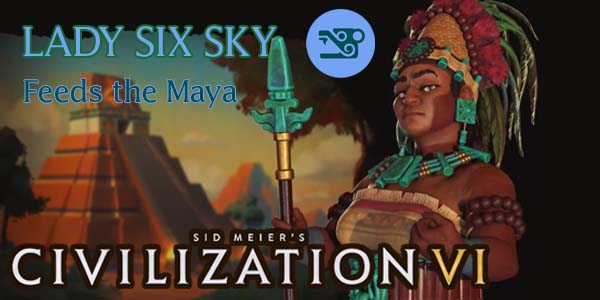
Firaxis will be releasing Civilization VI DLC packs with new game modes, new civilizations, and new leaders through March of 2021. The first such "New Frontiers" pack released in May of 2020 and included two new civilizations: the Maya and Gran Colombia.

For future releases that include multiple leaders or civilizations, I may put up polls on Patreon to let my Patrons decide which civ or leader to cover first (if Firaxis gives enough advance notice). I may also put up polls asking if my Patrons would prefer that I make guides focused on the new game modes. So if you would like to vote on which content you would prefer to see sooner, I hope you'll consider supporting the creation of this content on Patreon.
The group of peoples collectively known as the "Maya" occupied the Yucatán region of Central America. The Maya never unified under a singular state, instead consisting of a variety of theologically-governed chiefdoms and city-states, whose elites engaged in court intrigue against each other. Despite never being unified, the culture is well-known for its sophisticated writing, architecture, mathematics, astronomical observations, and its calendar system.
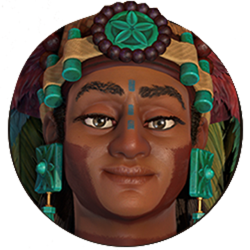
The Maya are perhaps most famous in popular culture for their "mysterious" disappearance, but this is mostly the result of popular misconception. It is true that large, classical Mayan cities were abandoned in the 8th and 9th centuries, but the decline is more gradual, and the civilization did not suddenly collapse overnight. Its population and power centers simply migrated north, where the Maya continued to flourish until the Spanish conquistadors conquered them. Though the exact cause(s) of the decline and migration is still a hotly disputed topic of modern archaeology. It is very likely that environmental factors played a large role, as the Maya built many of their cities in dense jungle, with thin soil and limited access to water, where they would be highly susceptible to drought and disease. In fact, the decentralized nature of the Maya allowed many remote Mayan villages to survive the Spanish conquests barely aware that anything had happened. Because of this, more than 6 million Mayan descendants still occupy the ancestral lands and speak Mayan languages.
Wak Chanil Ajaw (also known as Lady Six Sky) was the daughter of the chieftain of the city of Dos Pilas who's marriage was arranged with a prince of Naranjo in order to bring Naranjo into the Calakmul–Dos Pilas alliance. In the meantime, however, Naranjo engaged in its own conquests, and by the time Lady Six Sky took over as ruler of Naranjo (possibly as an informal regent for her son), Naranjo already had its own small empire going. As queen regent, she is believed to have acted as a warrior queen, and went on to successfully conquer several other Mayan city states. Her victories are depicted on several surviving monuments.
DISCLAIMER:
Civilization VI is still a "living game". Strategies for the game (and for specific leaders and civs) may change as Firaxis applies balance patches, introduces new features, or expands the game through further DLC or expansion packs, or as the Civ community discovers new strategies or exploits. As such, the following strategy guide may change from time to time. I will try to keep it up-to-date, and will make notations whenever changes are made. I'll also post links in the official 2K forums and CivFanatics, where I'll also report any changes made. If possible and practical, I will try to retain the original content of the strategy for posterity.
I welcome any feedback or suggestions that readers wish to offer. Feel free to post on the linked forums, or by posting a comment at the bottom of the page.
This guide is up to date as of the release of the "New Frontiers" August 2020 Update (ver. 1.0.4.8)
Lady Six Sky likes to build a tightly-packed core of highly-defensible cities improved with farms and plantations to feed her population. Cities that she builds or conquers beyond this tightly-packed core will less productive. [More]
8e30db96-fdf6-4db0-a88d-006411a6c91a|0|.0
Tags:Sid Meier's Civilization, Civilization VI, Maya, Lady Six Sky, ix mutal ajaw, mayab, observatory, hul'che, solitary, campus, science, plantation, farm, housing, amenity, capital
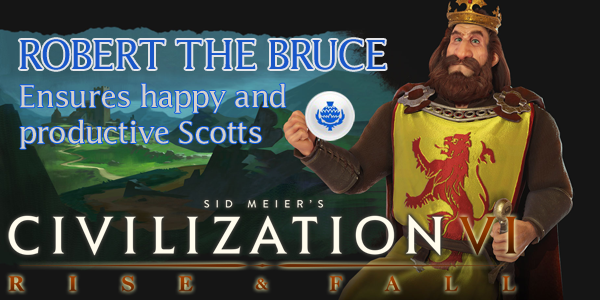
Civilization VI's second expansion, Gathering Storm was announced earlier this year, and will be released in a couple months. It will include modified rules and new civilizations, and I'll certainly be writing some guides for its new civilizations. In the meantime, however, I'm going to tackle one more civilization from the previous Rise & Fall expansion. This civilization happens to be the last of the "new" civilizations (a civ that has never appeared in a previous game): Scotland, lead by Robert the Bruce.

Scotland is currently a part of the United Kingdom, and makes up the northern third of the British isle. However, Scotland was an independent, sovereign kingdom throughout most of the Middle Ages. The lands of Scotland are shaped predominantly by receding glaciers during the tail end of the last ice age, and the area has been inhabited for over twelve thousand years. The Scottish Gaels strongly resisted Roman encroachment into their territory during the first and second centuries. Their raids on Roman forts forced emperor Hadrian to construct a defensive wall over 117 km long and as tall as 6 meters, that ran almost the entire width of the island. Parts of the wall still stand across England today. After the withdrawl of the Romans, the kingdom of the Picts became known as the kingdom of Alba, which flourished in the 12th and 14th centuries, possessing some of Europe's most influential philosophers.
In 1295, when Scotland's King John had refused to fight alongside England's King Edward against the French -- despite Edward having arbitrated the Scottish crown to John -- England and Scotland were plunged into war that resulted in England seizing control over Scotland. In the early 14th century, new Scottish King Robert the Bruce began a 20-year campaign against the English to restore Scottish independence. Victory at the battle of Bannockburn finally restored control of Scotland back to the Scotts, and conflict between England and Scotland continued off and on for many generations before the two countries were united diplomatically in 1707.
DISCLAIMER:
Civilization VI is still a "living game". Strategies for the game (and for specific leaders and civs) may change as Firaxis applies balance patches, introduces new features, or expands the game through further DLC or expansion packs, or as the Civ community discovers new strategies or exploits. As such, the following strategy guide may change from time to time. I will try to keep it up-to-date, and will make notations whenever changes are made. I'll also post links in the official 2K forums and CivFanatics, where I'll also report any changes made. If possible and practical, I will try to retain the original content of the strategy for posterity.
I welcome any feedback or suggestions that readers wish to offer. Feel free to post on the linked forums, or by posting a comment at the bottom of the page.
This guide is up to date as of the November 2018 "launcher" patch (ver. 1.0.0.262)
Scotland is another "world police" civ (similar to Australia). It can also hold its own and can become a technological and/or industrial powerhouse if its citizens remain happy.
[More]
4aff6e58-76c7-40e2-879e-064cb4e5c5c2|0|.0
Tags:Sid Meier's Civilization, Civilization VI, Civilization VI: Rise and Fall, Scotland, Scottish Enlightenment, Robert the Bruce, Bannockburn, golf course, highlander, flower of Scotland, ranger, amenity, happiness, housing, science, production, culture, war of liberation, casus beli, alliance, city state, unique improvement, unique ranged unit
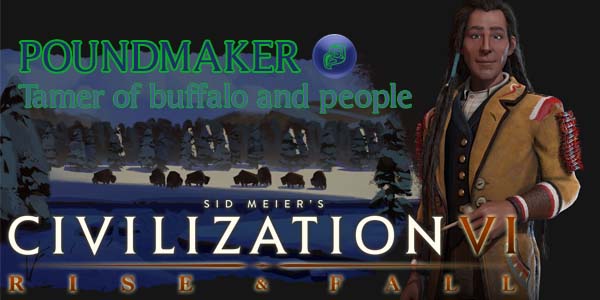
Civilization VI's first expansion, Rise & Fall released earlier this year, and it introduced a few leaders and civilizations that are making their first appearance in the franchise. I hope to be able to write strategies for every one of the expansion civs and leaders, but I'm going to start with the ones that are new to the franchise, and the ones that most utilize the expansion's new features (Era Score, governors, loyalty, and so on). This month, I will be tackling the Cree, lead by Poundmaker.
The Cree are a group of Algonquian-speaking North American First Nation hunter-gatherers. Their numbers have reached hundreds of thousands, and their territory has covered much of mainland Canada (stretching from Newfoundland all the way to western Alberta) and parts of modern-day northern Montana. They were divided into several subgroups based on region and dialect, but their social structure was mostly uniform. They grouped together into a "lodge" consisting of two families related by marriage. Several lodges would hunt and migrate together in a "band", with lodges routinely coming and going between different bands, or forming new bands.

As Cree bands migrated into the Great Plains, those bands began taking up buffalo hunting and herding. The leader of one such band, Pîhtokahanapiwiyin, became famous for his "divine" talent for using song and drum to attract buffalo into a walled pasture called a "pound". This talent, earned him the name Poundmaker from English-speakers. With the numbers of buffalo dwindling in the late 1800's, Pîhtokahanapiwiyin lead his people to Battleford to reaffirm his loyalty to the Queen and to negotiate for food and supplies. The townspeople, fearing an attack, holed up in the fort for several days, refusing to speak to Poundmaker, even though a spy had verified Poundmaker's peaceful intents. Canadian troops arrived a month later and attacked the Cree. The Canadians were routed, but Pîhtokahanapiwiyin ordered his warriors not to pursue, as he did not want a massacre. Despite not having instigated the conflict, Pîhtokahanapiwiyin surrendered to authorities in order to avoid further bloodshed. He was convicted of treason, and sent to prison. His sentence was only for seven months, but he died shortly after release due to a lung hemorrhage that he suffered in prison.
Pîhtokahanapiwiyin's actions, and his many alliances with other native tribes, and treaties with the Canadian government, have earned him a reputation as a skilled negotiator and a man of peace and wisdom. Today, the descendants of Pîhtokahanapiwiyin and his band live in the Poundmaker Cree Nation, a reservation in Saskatchewan, which was founded by Pîhtokahanapiwiyin himself.
DISCLAIMER:
Civilization VI is still very early in its life-cycle (particularly the Rise & Fall expansion. Strategies for the game (and for specific leaders and civs) may change as Firaxis applies balance patches, introduces new features, or expands the game through further DLC or expansion packs, or as the Civ community discovers new strategies or exploits. As such, the following strategy guide may change from time to time. I will try to keep it up-to-date, and will make notations whenever changes are made. I'll also post links in the official 2K forums and CivFanatics, where I'll also report any changes made. If possible and practical, I will try to retain the original content of the strategy for posterity.
I welcome any feedback or suggestions that readers wish to offer. Feel free to post on the linked forums, or by posting a comment at the bottom of the page.
This guide is up to date as of the July 2018 "Red Shell" patch (ver. 1.0.0.262)
Poundmaker had front-loaded bonuses that encourage him to be a trade-based peacemonger in Civilization VI: Rise & Fall, who gains additional bonuses from trade routes (either domestic or foreign) with cities that contain camps or pastures...
[More]
fc0ccceb-184d-4d57-905e-2ea1f5986234|1|5.0
Tags:Sid Meier's Civilization, Civilization VI, Civilization VI: Rise and Fall, Cree, Nehiyawak, Poundmaker, Pihtokahanapiwiyin, Nihithaw, favorable terms, iron confederacy, okihtcitaw, mekewap, alliance, trade route, trader, pottery, food, gold, production, camp, pasture, resource, housing, Canada, first nation, unique improvement, unique recon unit
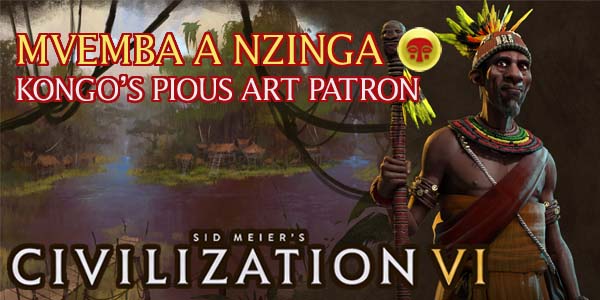
The Kingdom of Kongo was a small, but prosperous kingdom located on the west coast of sub-Saharan Africa. It can trace its origins back to the late 14th century, when Lukeni lua Nimi conquered the city of Mwene Kabunga and renamed it M'banza-Kongo. The city grew rapidly in an otherwise sparsely-populated region, and by the 17th century, it contained about one-fifth of the entire Kongo population (around 100,000 people). It's large population made it a prosperous and wealthy trading hub that eventually attracted the attention of European powers. The Portuguese set up colonies in Kongo territory, where they would set up a Roman Catholic church that would become one of the strongest churches in all of Africa. In 2017, the entire city of M'banza-Kongo was declared a UNESCO World Heritage Site.
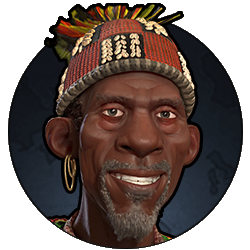
In the first half of the 16th century, Kongo was ruled by Mvemba a Nzinga. His father converted to Christianity following the arrival of the Portuguese, and Mvemba a Nzinga added "Afonso" to his name, later becoming known as King Afonso I of Kongo. Afonso played a leading role in Kongo's conversion to Christianity and helped to establish and promote the Roman Catholic Church in the region. The reasoning for his conversion is unclear. Some scholars believe that he was motivated by genuine faith; while others believe that he was only complicit in the conversion in order to facilitate trade with European powers, and possibly to try to spare his population from becoming subject to the Atlantic slave trade. While Kongo had a slave economy of its own, and the kingdom willingly sold slaves to the Europeans, Afonso still denounced the Portuguese as exploiting Kongo's cooperation by kidnapping free Kongo citizens in violation of Kongolese law. The King of Portugal responded by dispatching officers to oversee the slave trade and ensure that only lawful slaves were sold to Europeans, and he demanded additional tribute from Kongo, such as wines and grains.
DISCLAIMER:
Civilization VI is still very early in its life-cycle. Strategies for the game (and for specific leaders and civs) may change as Firaxis applies balance patches, introduces new features, or expands the game through DLC or expansion packs, or as the Civ community discovers new strategies. As such, the following strategy guide may change from time to time. I will try to keep it up-to-date, and will make notations whenever changes are made. I'll also post links in the official 2K forums and CivFanatics, where I'll also report any changes made. If possible and practical, I will try to retain the original content of the strategy for posterity.
I welcome any feedback or suggestions that readers wish to offer. Feel free to post on the linked forums, or by posting a comment at the bottom of the page.
This guide is up to date as of the Summer 2017 patch (ver. 1.0.0.167) (Nubia DLC)
Kongo is a civilization that thrives in jungles and forest, growing massive (and productive) cities. Mvemba a Nzinga adds a unique religious flavor to the civilization by preventing it from being able to found its own religion, while simultaneously wanting other players to send their religion to you.
[More]
d42e1e83-3ee9-4f90-ab44-b8ddd956e2eb|1|5.0
Tags:Sid Meier's Civilization, Civilization VI, Kongo, Kongolese, Mvemba a Nzinga, Afonso I, Nkisi, religious convert, enthusiastic disciple, Ngao Mbeba, Mbanza, neighborhood, housing, appeal, religion, woods, rainforest, art, sculpture, archaeology, relic, artifact, museum, culture, slavery, Atlantic slave trade, unique improvement, unique melee unit, swordsman
|

| 12 | | | | | | | 60 | | 11 | | | | | | | 55 | | 10 | | | | | | | 50 | | 09 | | | | | | | 45 | | 08 | | | | | | | 40 | | 07 | | | | | | | 35 | | 06 | | | | | | | 30 | | 05 | | | | | | | 25 | | 04 | | | | | | | 20 | | 03 | | | | | | | 15 | | 02 | | | | | | | 10 | | 01 | | | | | | | 05 |
|